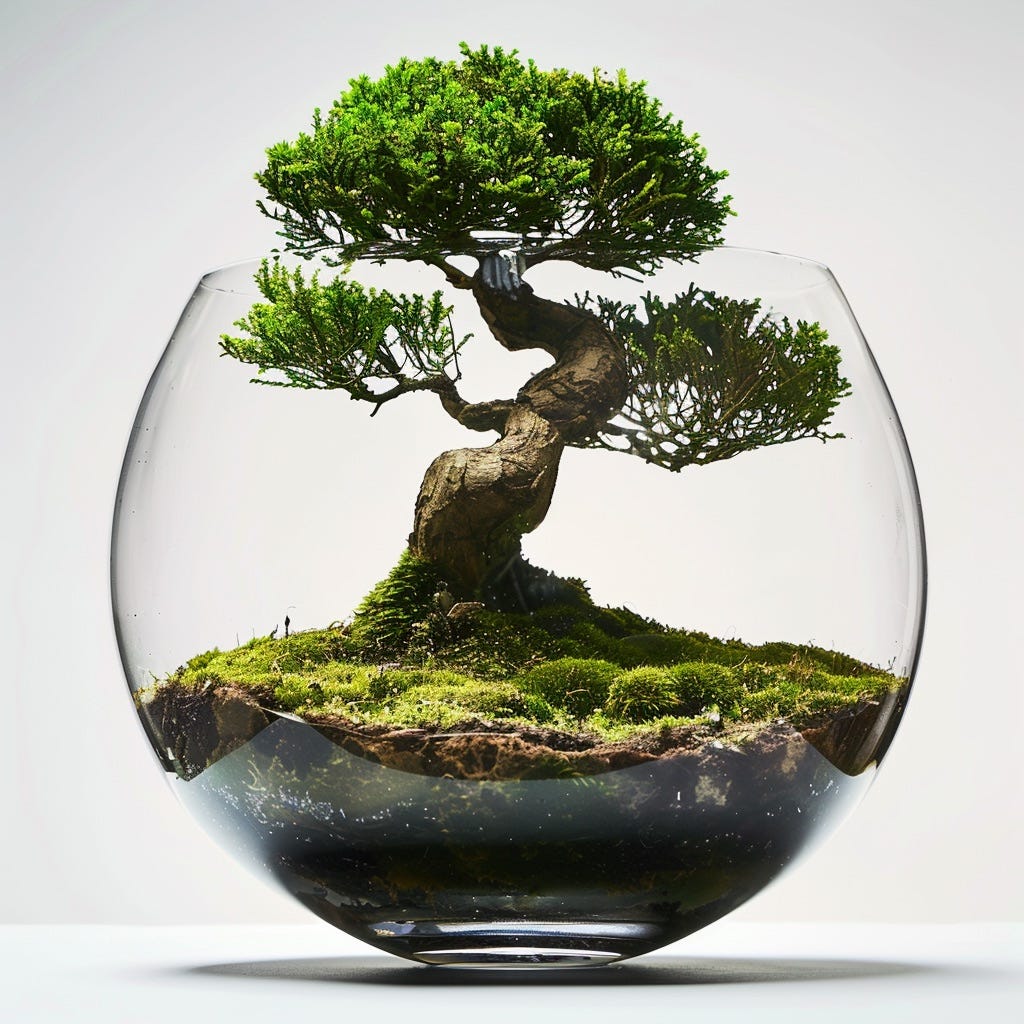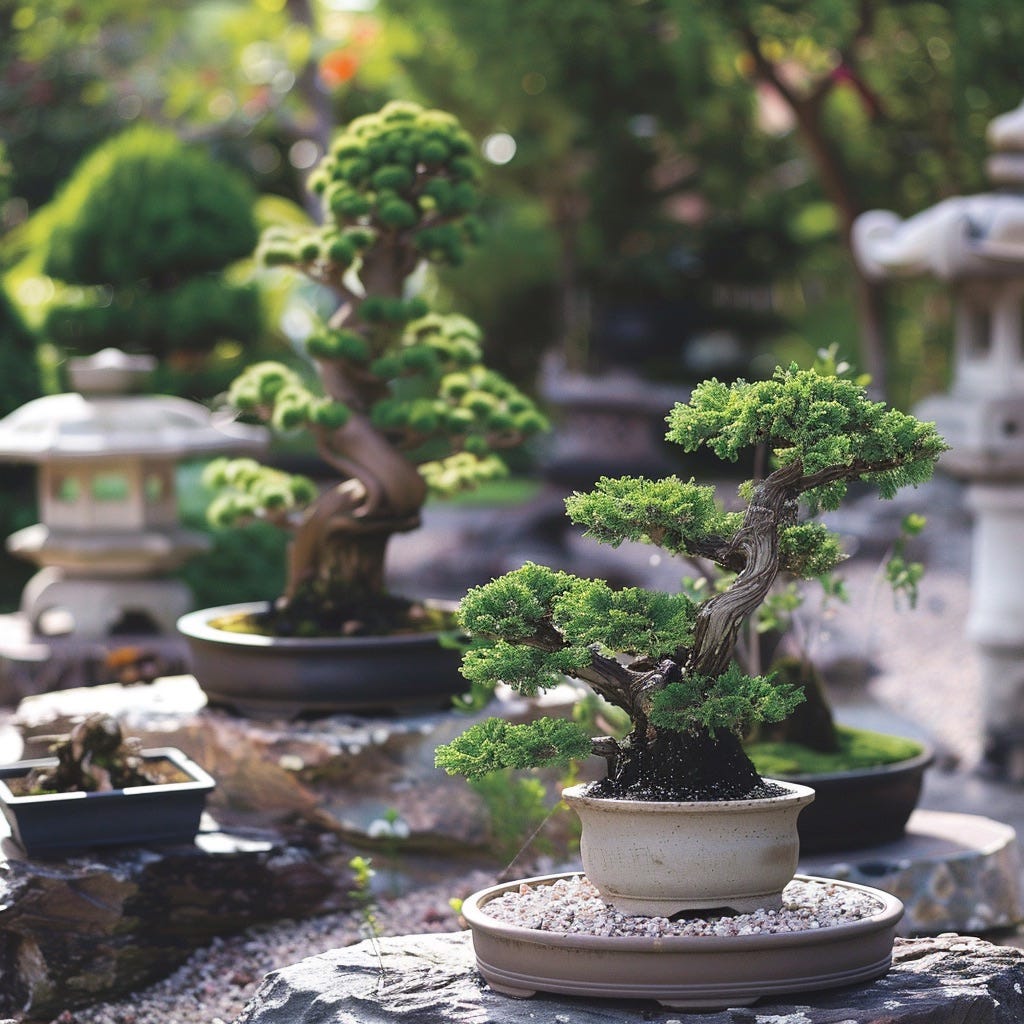Everything You Need to Know About Bonsai Potting Soils
By Penny Pawl
NAPA VALLEY, Calif. — It’s that time of year, when lots of potting and repotting is going on. I was potting some seedlings a few days ago that I had started in seedling mix. Seedling mix is good for seedlings because it is sterile, drains well and the seeds can readily make new roots. There is no fertilizer in this mix as the plants are just germinating and will be moved to a soil mixture within a short time.
While I was potting up the seedlings from the starter mix, I noticed the type of soil that was in the bag I had purchased. It was an organic mix but did not appear to have small sharp stones in it. I have been working with bonsai for many years and all the soils used in bonsai have various sharp rocks and pebbles in them. This encourages the feeder roots to split and grow many rather than one or two main roots. In fact, I potted up a plant today from my old bonsai mix and it was mostly feeder roots.
When you repot a plant and then water it, watch and make sure the water runs out the bottom. On occasion I have lifted a plant out of the pot after watering and only the top inch is moist.
The bonsai soils retain moisture but drain all the standing water out of the soil. These soils seem to stay damp longer than some of the plants I have purchased over the years which are planted in a mixture that is heavily into peat moss. When the soil containing peat moss dries out, it must be soaked in water to become moist again.
The recipes for bonsai soils depend on the plant that is going to be planted. Some, like junipers and pines, are planted into completely soilless mixes with just small stones, pumice, a stone called akadama (which comes from Japan) and perhaps compost. Maples and other deciduous trees need a mixture that contains more compost. All these mixtures need fertilizers and I mostly use worm compost on top which contains all the nutrients plants need.
Akadama is a product from the volcanoes of Japan and is praised for its ability to help soils retain moisture while also draining excess water. It is rather expensive, so I would not recommend it for ordinary potting soil. But you can purchase pumice or red lava rock and add them to your potting soil to get better water flow.
Because of the value of the products in these soils, I do not discard them. I dry them in the summer in my hot house and store them in a garbage can. When I am potting up plants I reuse these soils and the plants for the most part do very well in this soil. I do spend a bit of time weeding these pots. If you want to sterilize it, you can wet it and put a piece of heavy plastic over the soil and bake it in the sun. I have heard of people baking it in their ovens, but I have never tried that and I hear it is a smelly process.
It’s important not to use the soil in your garden for potted plants. There is a lot of clay mixed into these soils and they do not release the water as well. Also, in some areas that have been flooded over the centuries, that clay is on top of the soil.
Dean Donaldson, who was the Farm Advisor when I became a Master Gardener, gave a demonstration one year that still impresses me. He filled a tall glass cylinder with various soils, some stones, loam and peat moss in layers, not mixed. Then he poured water into the cylinder. Each level had to be saturated before it would move down into the next layer. This is true of all types of soils if not mixed. Soils have a tension and need to be full of water to release it to the next layer. And occasionally I will discover that a plant not doing well has not been getting water to the bottom of the pot. The soil has compacted to the point that it cannot go beyond a certain point without being saturated. If you notice the water staying on the surface of the soil, check to see if it has gone all the way to the bottom of the pot. If it lingers on the soil, then you may have a problem. Sometimes I repot these plants and others I poke holes to allow the water to drain.
As I gather these used soils and reuse them, I make sure they are mixed well. And each pot gets its dose of worm compost. You can learn more about compost and worm composting your kitchen waste by attending one of the compost workshops sponsored by the city and county of Napa. Regular compost is a soil conditioner while worm compost is a very mild fertilizer using the droppings of worms. It is sold sometimes as “Worm Gold.”
One important thing I learned early on in the art of bonsai is to never leave your chopsticks behind when you eat Asian foods. They are great for repotting. In order to make sure that new soil is mixed with the old soil around the roots, the chop stick is worked around the pot to fill any air spaces that may be left and incorporate new into the old soil around the root ball. I do this even when potting plants up. Works well and the chop sticks are just the right size for this chore. If there is an air pocket, it may allow fungus or other unfavorable items in that pocket.
If today's story captured your interest, explore these related articles:
Penny Pawl is a UC Master Gardener of Napa County.





should clarify one thing, I pot up all my plants in bonsai soil, not just bonsai
I am looking for someone to repot and prune two bonsai that I have had for years and were potted by a dear friend, now long gone. Do you repot or do you know someone who does? Patricia (707) 337-9196